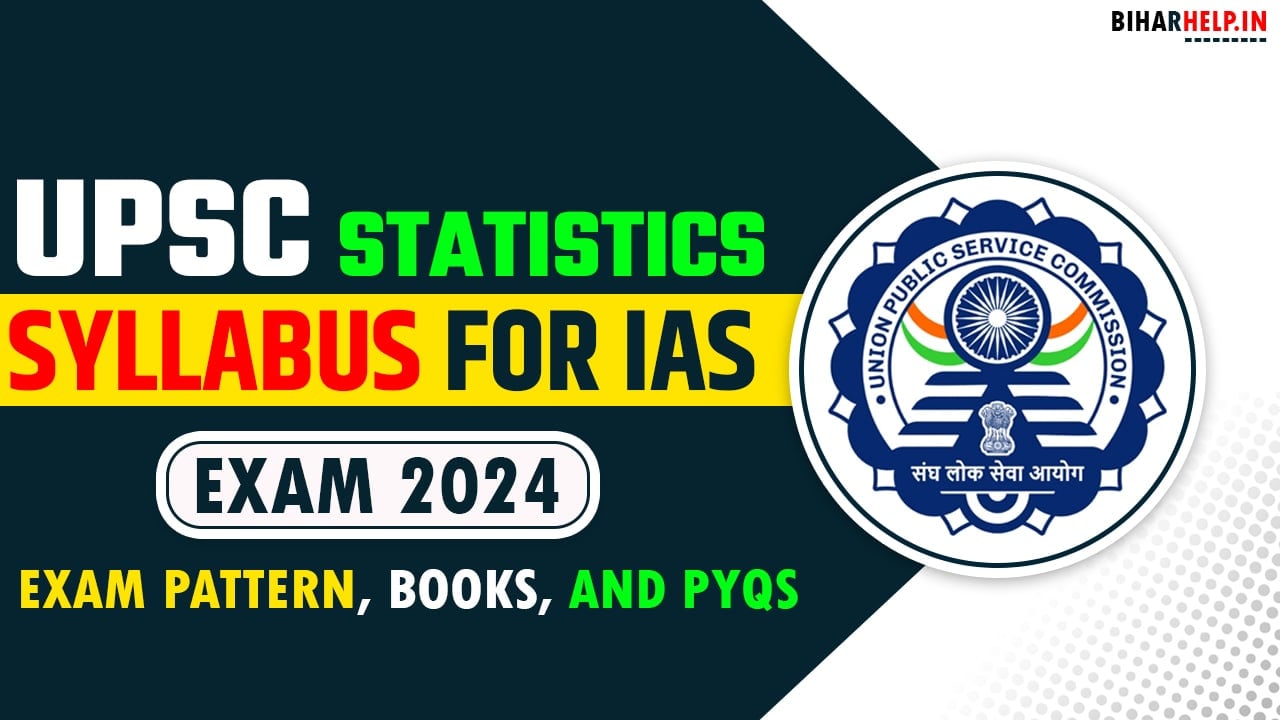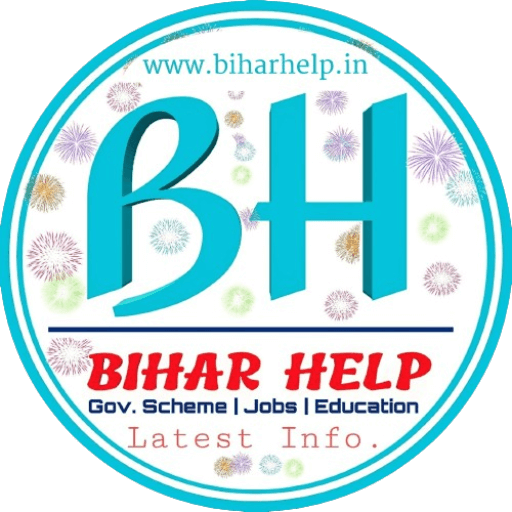UPSC Statistics Syllabus: In the list of 48 UPSC optional subjects, one of the least favorite subjects is ‘Statistics Optional’. This is due to the technical and specific nature of the Statistics Optional paper. Many candidates hesitate to take Statistics as an optional subject in the UPSC exam due to its similarity with Mathematics and its complex syllabus.


However, choosing Statistics as an optional subject offers distinct advantages to individuals with a strong understanding of probability, sampling techniques, data analysis, and related concepts. This subject offers an opportunity to score high marks with minimum competition. Explore the syllabus, advantages, PYQ and more of the Statistics optional in this article.
UPSC CSE Syllabus 2024
UPSC Statistics Optional Subject For Mains Exam
The subject of Statistics is related to data. The process involves collecting, organizing, analyzing, interpreting, and presenting data to derive meaningful insights. Candidates having interest in mathematical type subjects and looking for technical subject can opt for Statistics as optional.
Statistics elective subjects are usually included in related undergraduate courses. Like other optional papers, Statistics optional also consists of two papers, Paper 1 and Paper 2, each carrying 250 marks. Once the candidates have developed a good understanding of the fundamental concepts in this optional then scoring high marks is not much challenging.
UPSC Statistics Syllabus Optional
The Statistics optional course is equally divided into two papers. Paper I focuses on subjects like probability, statistical inference, analysis of covariance and sampling techniques. Paper II of the examination focuses on statistical computing, industrial statistics and quantitative economics.
Candidates can download the UPSC Statistics Optional Syllabus PDF by visiting the official website or see the table given below for the complete subject-wise syllabus.
UPSC Statistics Optional Syllabus Paper 1
Paper 1 Statistics optional course mostly covers the theoretical and fundamental concepts of Statistics. Statistics Optional Paper 1 has four main topics distributed among different sub-topics. Here is the syllabus of the first paper of Statistics optional:
Table: UPSC Statistics Optional Syllabus For Paper 2
| Topic |
Subtopics |
| 1. Probability |
- Sample space and events, probability measure and probability space, random variable as a measurable function.
- Distribution function of a random variable, discrete and continuous-type random variable, probability density function, vector-valued random variable, probability mass function, marginal and conditional distributions, stochastic independence of events and of random variables, conditional expectation, expectation and moments of a random variable, convergence of a sequence of random variable in distribution, in probability, in path mean and almost everywhere, their criteria and inter-relations, Chebyshev’s inequality and Khintchine’s weak law of large numbers, strong law of large numbers, and Kolmogoroffs theorems, probability generating function, characteristic function, moment generating function, inversion theorem, Linderberg and Levy forms of central limit theorem, continuous probability distributions and standard discrete.
|
| 2. Statistical Inference |
- Consistency, unbiasedness, efficiency, completeness, ancillary statistics, sufficiency, factorization theorem, exponential family of distribution and its properties, Rao Blackwell and Lehmann-Scheffe theorems, uniformly minimum variance unbiased (UMVU) estimation, Cramer-Rao inequality for single Parameter.
- Estimation by methods of moments, maximum likelihood, minimum chi-square and modified minimum chi-square, least squares, properties of maximum likelihood and other estimators, prior and posterior distributions, loss function, asymptotic efficiency, risk function, and minimax estimator. Bayes estimators.
- Non-randomised and randomised tests, critical function, MP tests, Neyman-Pearson lemma, monotone likelihood ratio: similar and unbiased tests, UMP tests, UMPU tests for single parameter likelihood ratio test and its asymptotic distribution. Confidence bounds and its relation.
- Kolmogorov’s test for goodness of fit and its consistency, Wilcoxon signed ranks test and its consistency, sign test, and its optimality, Kolmogorov-Smirnov two-sample test, run test, Wilcoxon-Mann-Whitney test, and median test, along with their consistency and asymptotic normality, are all essential statistical methods for analyzing data and making inferences.
- Wald’s SPRT and its properties, Oc, and ASN functions for tests regarding parameters for Bernoulli, normal, Poisson and exponential distributions. Wald’s fundamental identity.
|
| 3. Linear Inference and Multivariate Analysis |
- Linear statistical models, least squares estimates, Gauss-Markoff theory, theory of least squares and analysis of variance, normal equations, and their precision, test of significance, and interval estimates based on least squares theory in oneway, two-way, curvilinear regression, and three-way classified data, linear regression, regression analysis, and orthogonal polynomials, multiple regression, multiple and partial correlations, multivariate normal distribution, estimation of variance and covariance components, Mahalanobis’s D2 and Hotelling’s T2 statistics and their applications and properties, discriminant analysis, canonical correlations, and principal component analysis.
|
| 4. Sampling Theory and Design of Experiments |
- An outline of fixed-population and super-population approaches, distinctive features of finite population sampling, stratified random sampling, simple random sampling with and without replacement, probability sampling designs, cluster sampling, two-stage and multi-stage sampling, systematic sampling and its efficacy, probability proportional to size sampling with and without replacement, two-phase sampling, the Hansen-Hurwitz and the Horvitz Thompson estimators, ratio and regression methods of estimation involving one or more auxiliary variables, non-negative variance estimation with reference to the Horvitz-Thompson estimator, non-sampling errors.
- Fixed effects model (two-way classification) random and mixed effects models (two-way classification with equal observation per cell), RBD, LSD, CRD and their analyses, incomplete block designs, missing plot technique, confounding in factorial experiments, BIBD, concepts of orthogonality and balance, factorial experiments and 24 and 32, split-plot and simple lattice designs, transformation of data Duncan’s multiple range test.
|
UPSC Statistics Optional Syllabus For Paper 2
Statistics optional subjects in Paper 2 highlight dynamic subjects like Official Statistics, Demography and Psychometry, providing a comprehensive understanding of statistical principles applied in various fields. To score good marks candidates need to master each and every topic of Paper 2 Statistics Optional Course. The syllabus of paper 2 is as follows:
Table: UPSC Statistics Optional Syllabus For Paper 2
| Topic |
Subtopics |
| 1. Industrial Statistics |
- Process and product control, different types of control charts for variables and attributes, X, R, s, p, np and charts, general theory of control charts, cumulative sum chart. Single, double, multiple, and sequential sampling plans for attributes, OC, ASN, AOQ, and ATI curves, AQL, LTPD, and AOQL, Sampling plans for variables, concepts of producer’s and consumer’s risks, Use of Dodge-Romin tables.
- Concept of reliability, reliability of series and parallel systems and other simple configurations, failure rate, and reliability functions, renewal density, and renewal function, Failure models: exponential, Weibull, normal, lognormal. Problems in Life Testing of Censored and Truncated Experiments for Exponential Models.
|
| 2. Optimization Techniques |
- Different types of models in Operations Research, simulation and Monte-Carlo methods formulation of Linear Programming (LP) problem, their construction, and general methods of solution, simple LP model and its graphical solution, the two-phase method, and the M-technique with artificial variables, the simplex procedure, the duality theory of LP and its economic interpretation, transportation and assignment problems, sensitivity analysis, rectangular games, two-person zerosum games, methods of solution (graphical and algebraic).
- Replacement of failing or deteriorating items, the concept of scientific inventory management and analytical structure of inventory problems, group and individual replacement policies, simple models with deterministic and stochastic demand with and without lead time, Storage models with special reference to dam types.
- Homogeneous discrete-time Markov chains, classification of states, and ergodic theorems, homogeneous continuous-time Markov chains, transition probability matrix, Poisson process, elements of queuing theory, M/MI, M/M/K, G/M/l and M/G/1 queues.
- Solving statistical problems on computer using famous statistical software packages like SPSS.
|
| 3. Quantitative Economics and Official Statistics |
- Determination of trend, seasonal, and cyclical components, Box-Jenkins method, ARIMA models, and determination of orders of autoregressive and moving average components, tests for stationary series, forecasting. Commonly used index numbers – Laspeyre’s, Paasche’s, cham-base index number, uses and limitations of index numbers, the index number of wholesale prices, and Fisher’s ideal index numbers, consumer prices, agricultural production, and industrial production, time-reversal, test for index numbers -proportionality, factor-reversal and circular.
- General linear model, ordinary least square and generalized least squares methods of estimation, consequences, and solutions of multi-collinearity, the problem of multi-collinearity, autocorrelation, and its consequences, heteroscedasticity of disturbances and its testing, the problem of identification-rank and order conditions of identifiability, test for independence of disturbances concept of structure and model for simultaneous equations, two-stage least square method of estimation.
- Present official statistical system in India relating to population, agriculture, trade and prices, methods of collection of official statistics, their reliability and limitations, industrial production,various official agencies responsible for data collection, principal publications containing such statistics, and their main functions.
|
| 4. Demography and Psychometry |
- Demographic data from census, registration, NSS, and other surveys, and uses, definition, and their limitations, construction and uses of vital rates and ratios, measures of fertility, reproduction rates, morbidity rate, complete and abridged life tables, construction of life tables from vital statistics and census returns, standardized death rate, uses of life tables, logistic and other population growth curves, population projection, stable population, quasi-stable population, techniques in estimation of demographic parameters, fitting a logistic curve, standard classification by cause of death, health surveys and use of hospital statistics.
- Methods of standardisation of scales and tests, Z-scores, standard scores, percentile scores, intelligence quotient and its measurement and uses, T-scores, validity and reliability of test scores and its determination, use of factor analysis and path analysis in psychometry.
|
UPSC Statistics Optional Subject Pros and Cons
Before choosing any optional subject, candidates should understand its advantages and disadvantages. This applies to alternative statistics also. Given below are the advantages and disadvantages of choosing Statistics in UPSC CSE Mains exam:
Pros of UPSC Statistics Optional Subject
Statistics optional subject provides the following advantages to the candidates:
- Competition is low and scoring opportunities are good.
- Less subjectivity makes it easier to score high marks after sufficient revision and practice.
- Steady curriculum which is easy to cover if you have prior knowledge.
- Suitable for those candidates who have studied Statistics during graduation or post graduation.
- Best for candidates aiming for UPSC Indian Statistical Service (ISS) examination.
Cons of UPSC Statistics Optional Subject
Candidates may avoid taking this optional subject in the main examination due to the following reasons:
- Shortage of study material in the market for Statistics optional subject.
- Quality data Alternative test series are not readily available.
- There is no overlap with other General Studies papers making it difficult for students to balance all the topics of UPSC Mains.
- It requires considerable self-study and writing practice.
Previous Year’s UPSC Statistics Optional Paper
To understand the nature of questions asked in the Statistics optional paper, it is important to have a look at the previous year question papers. Optional UPSC PYQs are good sources of analysis requirements for this topic and practice answer writing for UPSC Mains.
Here is the direct link to download the year-wise Statistics Optional UPSC question paper:
| Statistics Optional Previous Year Question Papers |
| Year |
Paper |
Download Link |
| 2020 |
Statistics Paper I |
Website |
| Statistics Paper II |
Website |
| 2021 |
Statistics Paper I |
Website |
| Statistics Paper II |
Website |
| 2022 |
Statistics Paper I |
Website |
| Statistics Paper II |
Website |
| 2023 |
Statistics Paper I |
Website |
| Statistics Paper II |
Website |
UPSC Statistics Optional Books
Candidates must ensure that they have quality study material to cover all the topics of the Elective Statistics course. Considering the broad syllabus of Optional Statistics, it is highly recommended to refer to the standard books. Here is a list of Statistics optional books to prepare for UPSC Mains exam:
| UPSC Statistics Optional Books |
| Book Name |
Author |
| An Introduction to Probability Theory & Mathematical Statistics |
V K Rohtagi |
| Introductory Probability and Statistical Applications |
Paul Meyer |
| An Outline of Statistical Theory (2 Vol.) |
A M Goon, M K Gupta, and B. Dass Gupta |
| Fundamentals of Applied Statistics |
S C Gupta and V K Kapoor |
| Fundamentals of Mathematical Statistics |
A C Gupta and V K Kapoor |
| Fundamentals of Statistics (2 Vol.) |
A M Goon, M K Gupta, and B Dass Gupta |
| Sampling Techniques |
William G. Cochran |
| Sampling Theory of Surveys with Applications |
B. V Sukhatme & B V Sukhatme |
How to Prepare for UPSC Statistics Optional Subject?
Quality reference material coupled with a good preparation strategy and dedication can do wonders in Statistics Optional. Scoring 250+ is possible if candidates prepare systematically for UPSC Mains exam with this option. Here are some tips for preparing for Statistics Optional in UPSC:
- Syllabus First: Take a look at the latest Statistics Optional Paper Syllabus and note down the topics to study.
- PYQ Analysis: Candidates should analyze the previous year question papers given above and note down the recurring topics.
- Fundamentals: Start with fundamental concepts and study high-yield topics carefully.
- Mathematics: Do not shy away from revising the relevant basic mathematics subjects.
- Speed and Accuracy: Candidates should practice maximum questions in an exam like environment, as this paper requires a balance of speed and accuracy which can be learned by appearing in UPSC Mains exam series.
- Avoid generic answers: Be specific in your answers as it is a technical subject with definite concepts. Try to use tables, charts and graphs in your responses.
- Get Help: Seek help wherever possible to improve performance in this optional. Consider joining an optional UPSC coaching or mentorship program.
UPSC Statistics Optional Subject Success Rate
While some candidates opt for ‘UPSC Statistics Optional’ in the UPSC Civil Services Mains exam, the success rate is average. Candidates who have made up their mind to take this optional can refer to the statistics available below for the Statistics optional UPSC success rate:
| Statistics Optional UPSC Success Rate |
| Year |
Success Rate in UPSC |
Total Appeared Candidates |
Selected Candidates |
| 2015 |
20 |
5 |
1 |
| 2014 |
16.7 |
6 |
1 |
| 2013 |
16.7 |
6 |
1 |
| 2012 |
6.3 |
16 |
1 |
| 2011 |
5.3 |
19 |
1 |
FAQs (UPSC Statistics Syllabus For IAS Exam 2024)
Is Statistics a good elective subject for Economics graduates?
It depends on the students, candidates with economics degree can choose this subject due to some overlapping subjects.
What is the success rate for Statistics optional in UPSC?
The success rate for Statistics Optional in UPSC has been average till 2015.
Is Statistics a scoring elective subject in UPSC?
Yes, Statistics is a scoring optional topic in UPSC if the candidates have prepared well.
What is the major disadvantage of choosing statistical alternatives?
A major drawback of selecting Statistics as an optional subject is the limited availability of study materials and primary test series dedicated to this subject.
A major drawback of selecting Statistics as an optional subject is the limited availability of study materials and primary test series dedicated to this subject.
It depends on the interest of the candidates as both Statistics and Mathematics are good subjects.
BiharHelp App
आपके उज्जवल भविष्य के लिए महत्वपूर्ण जानकारी यहाँ उपलब्ध है - सरकारी नौकरियाँ, परीक्षा परिणाम, प्रवेश पत्र और शैक्षिक अवसर। नवीनतम अपडेट और आवश्यक सूचनाओं के लिए BiharHelp ऐप डाउनलोड करें - आपकी सफलता का साथी।
Related Posts
- Bihar Home Guard Havildar Clerk Syllabus 2026: Exam Pattern, Subject-Wise Syllabus & PET Details
- SSC MTS Syllabus 2026: CBT Exam Pattern, Physical Test Details, Subject-Wise Syllabus & PDF Download
- UP Police Constable Syllabus 2026 – Exam Pattern, Subject-Wise Topics and New Preparation Guide
- UP Lekhpal New Syllabus 2026: Exam Pattern, Selection Process & PDF Download
- SSC GD Syllabus 2026: Exam Pattern, Selection Process, CBT Syllabus, PET/PST Details & PDF Download
- Bihar BEd Syllabus 2026: Exam Pattern, Subject-Wise Topics, Selection Process & PDF Download
- RRB Group D Syllabus 2026 PDF Download – Exam Pattern & Subject Wise Details
- UP Police Computer Operator Syllabus 2026: Exam Pattern, Selection Process, Subject-Wise Detailed Syllabus & PDF Download
- BTSC Pump Operator Syllabus 2025: Exam Pattern, Selection Process & PDF Download
- DSSSB MTS Syllabus 2026: Exam Pattern, Selection Process & Subject-wise Topics PDF
Jobs & शिक्षा से जुड़ी सभी जानकारी ! (यहाँ Click करें 👆)



